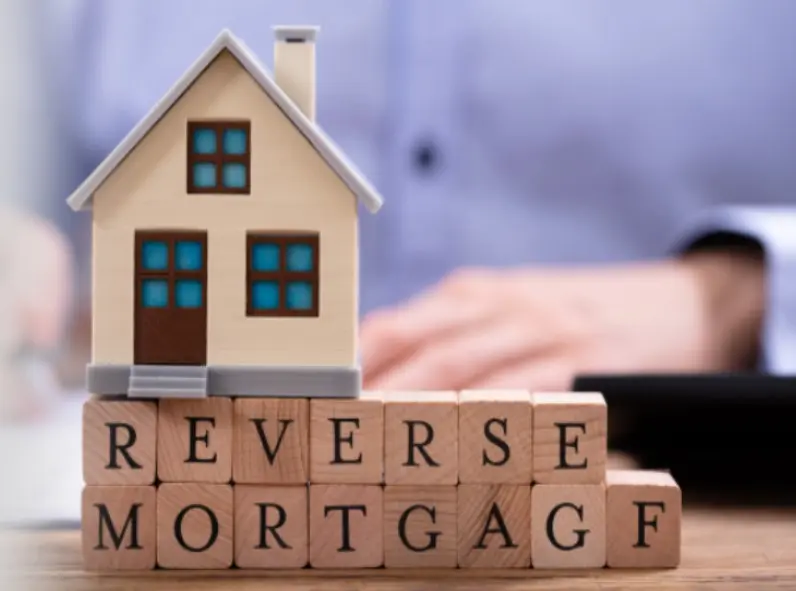Reverse mortgages are a popular way for seniors to boost retirement income without selling their homes. However, misconceptions about how they work can complicate decisions. This guide explains what reverse mortgages are, how they work, and the key qualifications needed.
What is a Reverse Mortgage
A reverse mortgage is a loan available to homeowners, typically aged 62 or older, that allows them to convert a portion of their home equity into cash. Unlike a traditional mortgage, where the borrower makes monthly payments to a lender, a reverse mortgage pays the homeowner, either as a lump sum, line of credit, or regular monthly disbursements. The loan is repaid only when the homeowner moves out, sells the home, or passes away.
The most common product in this category is the Home Equity Conversion Mortgage (HECM), which is insured by the Federal Housing Administration (FHA), and often compared to home equity line of credit rates like those in Utah.
How Reverse Mortgages Work
Reverse mortgages are fundamentally different from conventional home loans. Here’s what sets them apart:
- No Monthly Mortgage Payments Required
Instead of making payments, the lender pays you. You remain responsible for property taxes, homeowners insurance, and property maintenance.
- Loan Amount Based on Several Factors
The amount you can borrow depends on your age (or the age of the youngest borrower), the value of your home, current interest rates, and the lending limit set by the FHA. Generally, older borrowers with higher-value homes can access larger loan amounts.
- Flexible Payout Options
You can receive funds as a lump sum, fixed monthly payouts, a line of credit, or a mix of these options. Many homeowners appreciate the flexibility to choose a structure that meets their unique financial needs.
- Interest Accumulates Over Time
Interest accrues on the outstanding loan balance; you do not pay interest out of pocket each month. Instead, it adds to the total loan balance, reducing the equity in your home over time.
- Homeownership Remains with You
You retain the title to your home for as long as you live there. The loan only becomes due when you leave the home permanently.
- Nonrecourse Loan Protection
If the home sells for less than the owed balance when the loan becomes due, neither the homeowner nor their heirs will be responsible for the difference. FHA insurance covers the gap.
Who Qualifies for a Reverse Mortgage
Reverse mortgages are not available to everyone. Here are the key requirements:
- Age Requirement
You must be at least 62 years old. If two people own the home, the youngest must meet the age criteria.
- Home Ownership
You must own your home outright or have a low remaining mortgage balance that can be paid off with your reverse mortgage proceeds.
- Primary Residence
The home must be your primary residence. Vacation homes or investment properties do not qualify.
- Property Type
Eligible properties include single-family homes, some multifamily homes (with up to four units), HUD-approved condominiums, and certain manufactured homes.
- Financial Assessment
Lenders will evaluate your ability to pay ongoing property taxes, homeowners insurance, and basic home maintenance after closing the loan.
- Counseling Session Requirement
Before taking out a reverse mortgage, you must attend a counseling session with a HUD-approved counselor. This session ensures you fully understand the terms, costs, and obligations of the loan.
For those considering a reverse mortgage, it’s crucial to seek expert advice to navigate the complexities involved. Consulting with the best mortgage broker can provide invaluable insights and help tailor a solution that fits your financial needs. These professionals can guide you through the application process, ensuring you understand the terms and conditions, and help you make informed decisions about your financial future. By leveraging their expertise, you can maximize the benefits of a reverse mortgage while minimizing potential risks, ensuring a more secure and comfortable retirement.
Advantages of a Reverse Mortgage
- Supplement Retirement Income
Reverse mortgages offer retirees a way to access additional cash flow, which can be especially helpful for those on a fixed income.
- No Immediate Repayment
No monthly mortgage payments are required, relieving financial pressure for many retirees.
- Remain in Your Home
You can stay in your home and community, potentially for several more years.
- Flexible Use of Funds
Use proceeds to cover day-to-day expenses, large medical bills, home renovations, or simply create a financial cushion.
Drawbacks to Consider
- Reduced Home Equity
Interest accrues monthly, and the loan balance grows, meaning less equity remains in your home over time.
- Potential Impact on Benefits
While reverse mortgage funds do not count as taxable income, they may affect eligibility for need-based government programs such as Medicaid.
- Costs and Fees
Reverse mortgages come with closing costs, origination fees, mortgage insurance, and ongoing servicing fees. Compare costs carefully before committing.
- Requirement to Maintain the Home
You must continue to pay property taxes and insurance, and keep the home in good repair to avoid loan default.
Conclusion
Reverse mortgages can help seniors supplement retirement income while staying in their homes, but they aren’t right for everyone. Consider the pros and cons, how long you plan to stay in your home, and consult a trusted financial advisor or HUD-approved counselor.
Also Read-How Technology Is Shaping Modern Caregiving Careers
